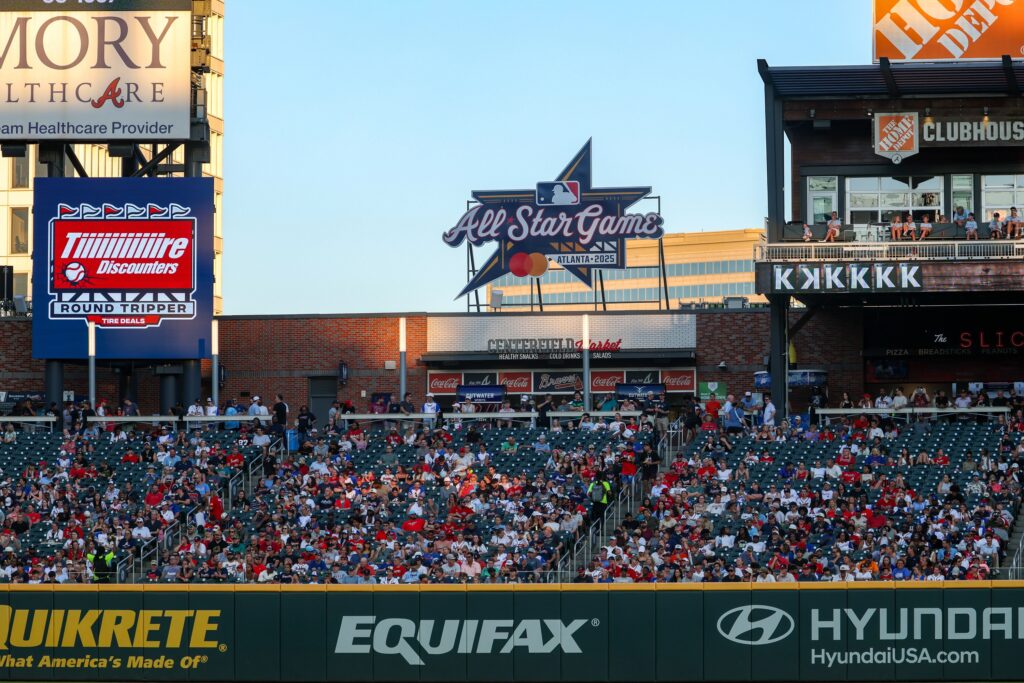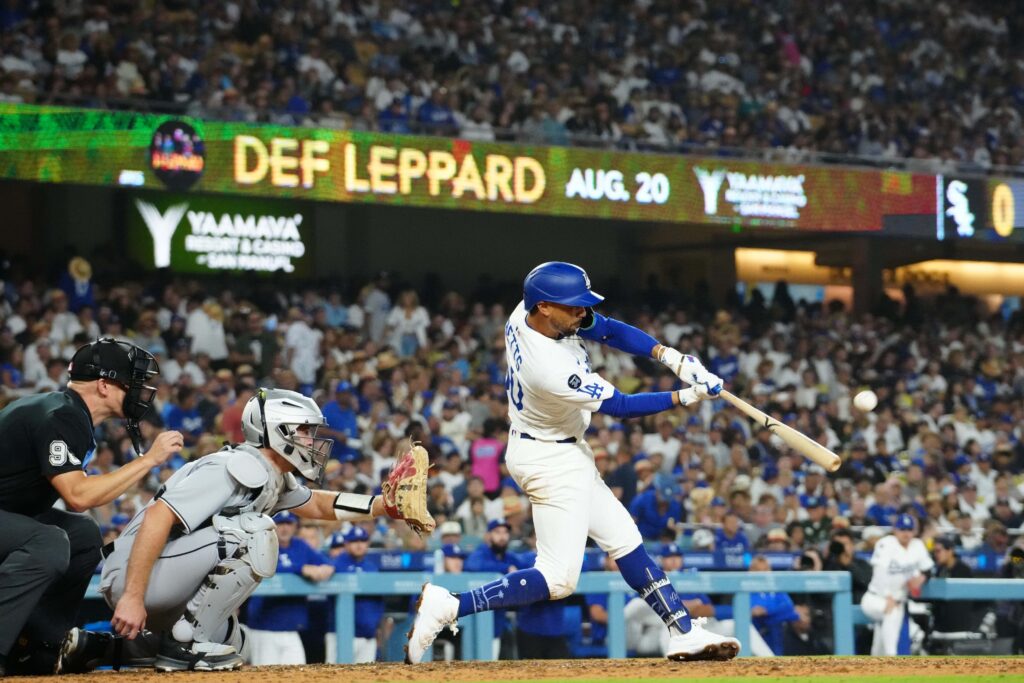Baseball is a 162-game grind that unfolds for the players involved over the course of eight or nine months, including Spring Training and Postseason play. In many ways, the deliberate, paced nature of the sport has run counter to a quickening culture fueled by hot takes in constant need of social media feedback.
To say it another way, baseball and platforms like Twitter make for strange bedfellows. Generally, it’s difficult to take an objective, 40,000-foot view if one is constantly reacting to the daily activities of baseball. This spiral of confusion can seem even more eye-crossing in a year that’s truly like no other in the history of the sport.
The current baseball season has implemented several new polarizing rules and changes to game functionality. Thus, 2023 has become rife with the potential for overreaction, as both perceived and statistically provable shifts have transformed the game – while providing a makeover that might even be bringing in new fans.
Now as the All-Star break is only about a month away, it’s a good time to check in on some of the more spicy memes trending in the baseball collective consciousness.
With four months to go, here are four takeaways from the 2023 MLB season so far.
4 Takeaways From The 2023 MLB Season So Far
What’s The Score?
Reflecting the world itself, baseball has been really weird for the past several years. It’s hard to argue, though, that baseball is a more fun game when guys are crossing home plate with greater frequency.
2019 and all of its controversial run-scoring anomalies create a good point of reference for what has likely been an ongoing MLB mandate to figure out a way to inject more action via offensive production into the sport.
Some speculated there was a difference in the baseballs themselves in 2019 – specifically in how tight the seams were woven – that created a historic home run output.
The previous high for home runs per game was set in 2017 at 1.26. 2019 crushed that pace with 1.39 home runs per game. Long balls are not the underlying cause of the run production spike this year, however, at the current per-game dong rate of 1.15.
2019 also saw 4.83 runs per game generated – historic levels that hadn’t been seen in 20 years since the steroid era. Runs per game have declined year over year since 2019 – cratering to 4.28 in 2021, only to bounce back this season to 4.55.
It’s certainly challenging to parse through the anecdotal reasons of whether it’s the elimination of defensive shifts or a pitch clock creating urgency that’s leading to a more robust run environment.
Regardless, the offense is back, and pitchers aren’t pleased.
Pitchers Under Siege
It turns out run scoring is only up compared to recent years, but is within the normal standard deviation of the past couple of decades. And home runs are actually down.
So, why are pitchers so stressed?
Veteran pitchers such as Kenley Jansen and Max Scherzer have voiced concerns about the pitch clock potentially leading to more injuries.
The number of injured list trips and days spent on the injured list is actually fairly comparable between this season and 2022, however.
While the stats don’t bear out Scherzer’s and Jansen’s concerns, injury attrition might not be best calculated as the total number of fallen bodies year-to-date.
Cumulative injury factors are impossible to estimate if pitchers aren’t conditioned properly for an entirely new paradigm. One thing is certain. Going forward, pitchers will have to condition themselves for a more cardiovascular approach to their craft.
Between the crackdown on substance augmentation for the balls, the pitch clock, and an end to defensive shifts – pitchers may feel like the league is rooting for a turnabout in their recent ability to dominate opposing hitters.
In actuality, though, run-scoring is well within the standard deviation of the past couple of decades – after getting out of whack in the past few years.
Theft On The Rise
Ironically, modernization and digitization have actually adjusted baseball closer to its old-school M.O. of quicker play and an emphasis on small ball. But particularly, the running game has seen a renaissance, and stolen bases have returned with a welcome vengeance.
Timing is perhaps one of the most crucial and intangible qualities that baseball players must possess. Pitchers are often said to disrupt a hitter’s timing. But 2023 has seen the tables turn, and it’s the pitchers who are having their timing disrupted.
In previous seasons pitchers could control the running game through unlimited throws over to the first baseman. But now disengagements from the pitching rubber are limited, and pitchers must choose their battles wisely.
Between catchers becoming more defensively specialized and scouting reports isolating running metrics, the stolen base had become in recent years a risk not worth taking for most teams.
The powers that be at MLB seem to want a grand larceny of bases to be such that a player like Esteury Ruiz could challenge for close to 100 steals.
Not only have pitchers been rendered hamstrung in their ability to tether a runner to a base, but the bases themselves were expanded to be three square inches bigger. This adjustment from 15 inches to 18 inches makes a huge difference, it turns out.
Bases are being stolen at a clip of .71 per game in 2023. For a reference point, stolen bases haven’t been that high since 1997 at .73 per game. Last season, the average was twenty percent lower at only .51 stolen bases per game.
While stolen bases certainly aren’t 2023’s equivalent to 2019 home run barrage, there’s no doubt getting guys in scoring position helps contribute to the increase in run scoring. Adding the dynamic component of speed back into the game restores baseball to its more eclectic and well-rounded spectrum of appeal.
Prospecting Gold
When considering that former elite prospect Forrest Whitley looks to now be lost for another season to injury – while never throwing a single pitch in the majors – a phrase that’s often used in baseball springs to mind: bullets being wasted.
Perhaps MLB teams are finally wising up to the idea that meticulous care in minor-league development does not inhibit pitchers from being injured.
Or perhaps it’s the new incentives that reward organizations with potential draft picks if one of their players finishes in Rookie of the Year voting.
Service time manipulation has often been credited as the rationale for keeping major league-ready players down on the farm. Organizations can actually have their cake and eat it, too, as the St. Louis Cardinals have done with Jordan Walker.
Walker got out to a respectable start as a 20-year-old rookie only to be demoted to allegedly work out some kinks. And now he’s back after enough time to get the Cardinals potentially another year of control but also with plenty of time to still be in Rookie of the Year contention.
In any case, minor league prospects seem to be flooding the major leagues in a new onslaught of a youth movement. And teams like the Oakland A’s who have nothing to play for have not been shy about debuting elite prospects arms like Mason Miller.
Of course, Miller is the classic example of why a team would rather a pitcher spend his ammunition in the majors. Miller now sits on the injured list with a strained forearm, but at least the A’s know they have a high-quality, major-league pitcher once he’s healthy.
No question, something is different about this season. It’s great to see teams like the Detroit Tigers and the Pittsburgh Pirates defying expectations and hanging around long enough to give their prospects some run within games that have meaning.
And with surprise contenders like the Baltimore Orioles and even dark horse Wild Card plays like the Cincinnati Reds boasting baller farm systems, the second half of the season could manifest a whole new crop of call-ups to get giddy over.
Main Image: Kim Klement-USA TODAY Sports



